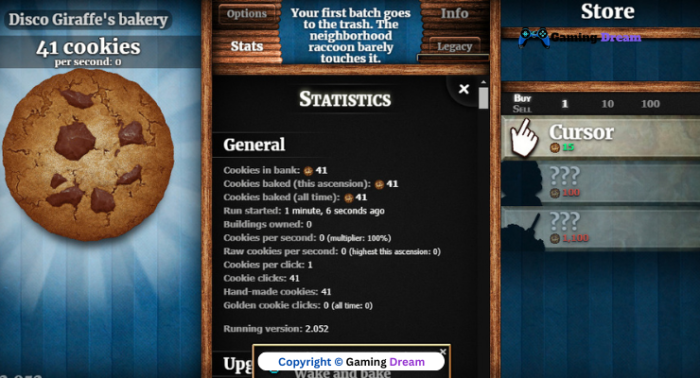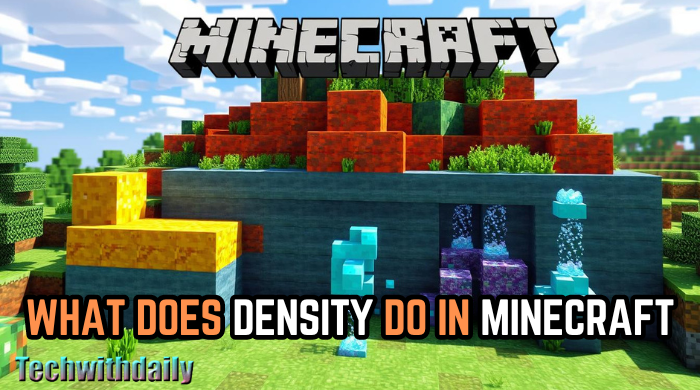
Table of Contents
Minecraft is more than just a game. It has a complex physics engine that makes everything work. Density is key in this engine, affecting how things move and interact in the game world. This guide will dive into density and how it impacts gameplay, world creation, and updates.
Key Takeaways
- Density is a crucial property that determines how objects behave in the Minecraft physics engine.
- Density affects the way blocks interact, including their falling and floating capabilities.
- Density is closely tied to the material properties of Minecraft blocks, influencing their behavior and crafting uses.
- World generation and terrain formation are heavily influenced by the density of various materials.
- Density can be manipulated to create innovative gameplay mechanics, particularly in Redstone circuits.
Understanding Density in Minecraft’s Physics Engine
We’re diving into Minecraft’s physics engine to learn about density. It’s key to understanding how blocks behave. Knowing about density helps you master the game’s complex mechanics.
Explaining the Role of Density in Block Behavior
In Minecraft, density affects how blocks act with gravity, buoyancy, and movement. Denser blocks, like stone or iron, behave differently than lighter ones, like wood or leaves. This difference is vital in the Minecraft physics engine, influencing the game’s world dynamics.
How Density Affects Falling and Floating Objects
Density impacts how blocks fall and float. Denser Minecraft block properties fall quicker. Less dense materials might float or act buoyant in liquids. This interaction is crucial for understanding object movement in Minecraft.
| Block Material | Density (g/cm³) | Falling Speed | Floating Ability |
| Stone | 2.6 | Faster | No |
| Wood | 0.5 | Slower | Yes |
| Sand | 1.6 | Moderate | No |
| Water | 1.0 | N/A | Yes |
The table shows how Minecraft material properties, like density, affect block behavior in the game’s physics engine.
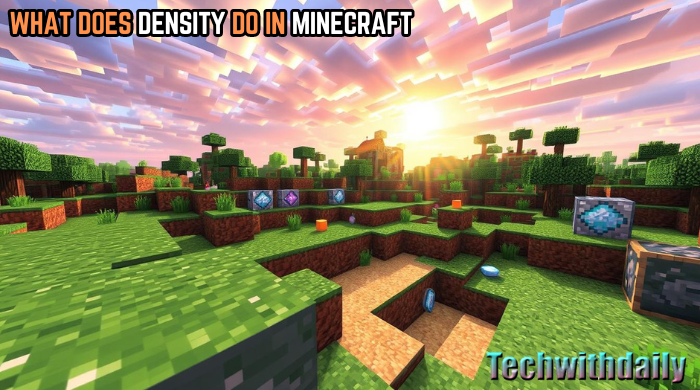
Exploring the Correlation Between Density and Material Properties
In Minecraft, material properties are key to how blocks act and interact. Density is a big factor in these properties. Let’s dive into how density affects different Minecraft material properties and Minecraft block properties.
Related Post: Minecraft (2009) Game Icons Banners
Density measures mass per volume. It changes how blocks behave in Minecraft. For example, iron and gold are denser than wood or sand. Knowing this can help players use blocks wisely.
Density and Strength
Density affects a block’s strength and durability. Blocks like diamond and obsidian are tough and last longer. They’re great for building and defending.
On the other hand, blocks like grass and leaves break easily. They need careful use.
Density and Interaction
The density of blocks also changes how they interact with the game world. For example, iron sinks in water, while oak logs float. This creates fun challenges and opportunities.
Understanding density and material properties helps players use blocks better. This knowledge is useful for building, managing resources, and making Redstone circuits. It lets players achieve their goals in creative ways.
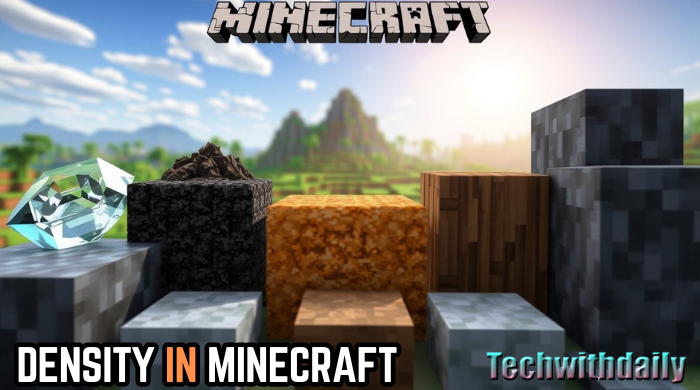
The Impact of Density on Minecraft World Generation
Minecraft’s world is vast and diverse, thanks to procedural generation. Density plays a key role in shaping this landscape. Knowing how density affects terrain and biome formation can reveal more about the game’s world generation.
How Density Influences Terrain and Biome Formation
In Minecraft, material density affects their behavior and placement. Denser blocks like stone and metal ores are found at lower elevations. Lighter materials like sand and dirt are on the surface. This creates varied terrain, from mountains to plains.
Biome formation is also linked to density. Dense materials like rock and minerals shape the land’s structure. This influences vegetation, water, and other features that define a biome. By understanding density, players can predict and even influence Minecraft world generation.
| Density Property | Impact on Terrain | Impact on Biome |
| High Density | Mountainous, rocky terrain | Sparse vegetation, mineral-rich |
| Low Density | Flat, expansive plains | Lush vegetation, fertile soil |
Exploring density and Minecraft game mechanics can deepen your appreciation for Minecraft’s world. This knowledge is crucial for players who want to understand and shape the game’s world generation.
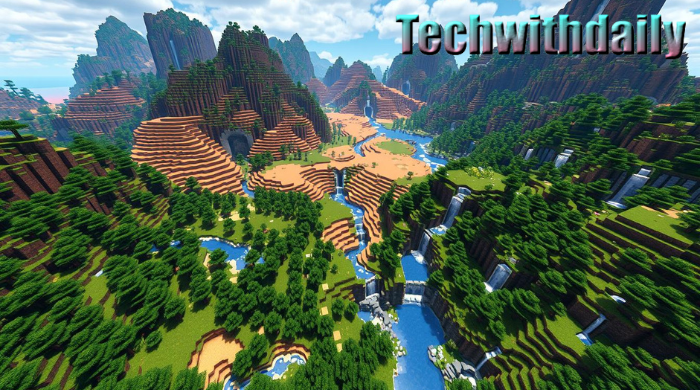
Manipulating Density for Gameplay Mechanics
Minecraft’s physics engine is deep and complex. Density plays a big role in this. Players can use density to create clever Minecraft redstone circuits and discover new Minecraft game mechanics.
Creative Uses of Density in Redstone Circuits
Redstone circuits are key to Minecraft’s automation and building. Knowing how density affects Redstone can lead to better circuits. Players can make things like buoyant elevators and doors that open based on density.
- Utilizing density differences to trigger redstone signals
- Designing compact and reliable density-based sorting systems
- Incorporating density-sensitive components into redstone-powered traps and puzzles
- Harnessing density to create unique transportation and movement mechanics
Playing with density and redstone can open up many possibilities. It’s all about experimenting and exploring Minecraft’s limits.
| Density Property | Application in Redstone Circuits |
| Buoyancy | Designing water-based elevators and transportation systems |
| Sinking/Floating Behavior | Creating density-sensitive doors, traps, and sorting mechanisms |
| Material Density | Utilizing different block densities to trigger redstone signals |
Mastering density and Minecraft Redstone circuits can unlock new creative possibilities. It can also improve your Minecraft game mechanics experience.
What does density do in Minecraft?
In Minecraft, density is key for how objects and materials act. Knowing about density helps you understand the game’s physics better. It makes your Minecraft experience richer.
Density affects how objects move and stay in place. Heavier blocks like stone or metal fall faster than lighter ones like wood or leaves. This changes how objects move in the game world.
Related Post: Masquerade Minecraft Skin Mask
Density also shapes Minecraft’s terrain and biomes. Dense materials like ores create mountains, deep holes, or thick forests. Players can explore and understand these environments better by knowing about density.
Lastly, density is important for making Redstone contraptions work. Different materials’ densities help build complex systems. These can be traps, elevators, or automated systems.
In short, what does density do in Minecraft? It controls how objects move and interact, shapes the terrain, and helps build Redstone devices. Learning about density opens up new ways to play, build, and solve problems in Minecraft.
| Density Property | Effect on Gameplay |
| Falling and Floating | Denser blocks fall faster, while lighter blocks float or drift more easily. |
| Terrain Generation | The distribution of dense materials shapes the landscape, creating diverse environments. |
| Redstone Mechanics | Density differences allow for the creation of complex Redstone-powered devices. |
Examining Density Changes in Recent Updates
Minecraft, the popular sandbox game, keeps getting better. New materials with special density properties have been added. These changes have made the game more challenging but also more fun.
New Materials and Their Corresponding Densities
New updates have brought in many new materials. For example, netherite is a dense, strong material from the Nether. It changes how players mine and craft. On the other hand, honeycomb blocks are light and can be used in creative building and redstone projects.
Let’s explore some of these new materials and their densities:
- Netherite: A dense and heavy material that sinks in water, offering increased protection and durability for players.
- Honeycomb: A lightweight block that is less dense than water, allowing for unique floating and buoyancy effects.
- Amethyst: A semi-transparent crystal with a moderate density, often used in decorative and magical applications.
- Copper: A malleable metal with a relatively low density, making it suitable for a variety of crafting and Redstone projects.
These new materials and their densities have brought new possibilities to Minecraft. Players can now try out innovative building and advanced Redstone projects.
Density’s Role in Underwater Environments
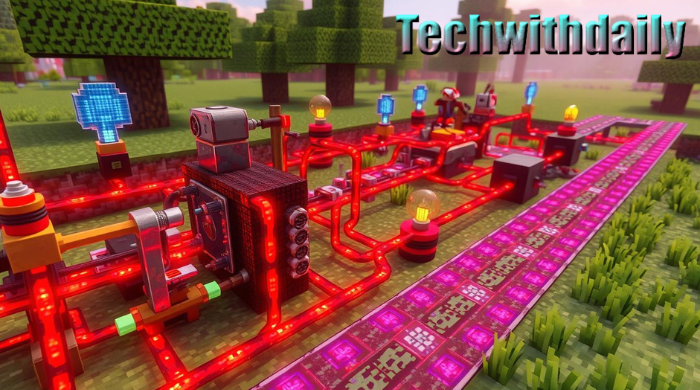
In the world of Minecraft underwater environments, density is key. It affects how things move and act underwater. Knowing about density helps players make the game’s water world more real and fun.
Buoyancy and Fluid Dynamics in Minecraft
The Minecraft physics engine follows real-world rules of buoyancy and fluid dynamics. Denser things like stone or iron sink, while less dense items like wood float. This lets players build cool underwater places, like sunken ships or cities.
Water’s density also affects how things move underwater. Blocks and mobs face different levels of resistance and drag. This makes the underwater world feel more real and exciting, where players must think about density and fluid dynamics.
| Block/Entity | Density | Behavior in Water |
| Stone | High | Sinks to the bottom |
| Wood | Low | Floats on the surface |
| Leaves | Very Low | Floats on the surface |
| Iron | High | Sinks to the bottom |
| Water | Medium | Provides resistance and drag to entities |
Understanding density in Minecraft underwater environments opens up new ways to play. Players can build amazing underwater places, like redstone circuits or cities that seem to defy gravity.
Comparative Analysis: Density in Minecraft vs. Real-World Physics
Exploring Minecraft shows how its physics engine mirrors real-world physics, especially density. Knowing the similarities and differences can improve your gameplay and open up new creative paths.
In Minecraft, block and object density affects their actions, like falling or floating. This mirrors real-world physics. Yet, the game’s engine is tweaked for fun, not perfect accuracy.
| Characteristic | Minecraft Physics | Real-World Physics |
| Block Falling | Blocks fall at a constant rate, regardless of their density. | Objects fall at a rate proportional to their density and mass, as described by the laws of gravity. |
| Floating and Buoyancy | Blocks with low density, such as wood, can float on water, while high-density blocks sink. | Buoyancy is determined by the relationship between an object’s density and the density of the fluid it is submerged in, as described by Archimedes’ principle. |
| Fluid Dynamics | Liquids in Minecraft follow a simplified set of rules, with no turbulence or complex interactions. | Real-world fluid dynamics involve complex interactions, including viscosity, turbulence, and the Bernoulli principle. |
Knowing these differences helps you navigate Minecraft better. You can use the game’s density rules to create cool redstone contraptions or structures that break real-world physics rules. This knowledge also shows the game’s design choices and limitations.
The comparison between Minecraft‘s density and real-world physics is interesting. It shows how game design and science interact. As you explore Minecraft, remember this about density. It can inspire your creativity and problem-solving.
Conclusion
In this guide, we’ve looked at how density affects Minecraft’s core mechanics and gameplay. We’ve covered the physics behind block behavior and how density is used in redstone circuits. Now, you understand density’s role in your Minecraft world.
Knowing how to use density will make playing Minecraft better. You can build amazing structures, create cool redstone devices, or explore the ocean. Density helps you unlock new possibilities and achieve great things in the game.
Keep exploring Minecraft and use what you’ve learned about density. Try out new ideas and see how density can help you. By doing this, you’ll make your Minecraft experience even better and join the global Minecraft community.
Frequently Asked Questions
What does density do in Minecraft?
Density is key in Minecraft. It changes how blocks and creatures act. It affects how things move and react to forces in the game.
How does density affect block behavior in Minecraft?
Density changes how blocks move. Heavy blocks fall fast. Lighter blocks float or move easily.
What is the relationship between density and material properties in Minecraft?
Density is linked to a block’s material. Different materials like wood or metal have different densities. This affects how they behave in the game.
How does density impact Minecraft’s world generation?
Density shapes Minecraft’s world. It helps create different terrains and biomes. The density of materials affects the game’s landscapes and underground areas.
Can players manipulate density for gameplay advantages in Minecraft?
Yes, players can use density for fun. They can make efficient circuits or build floating structures. It helps in many game scenarios.
How have density-related features evolved in Minecraft over time?
Minecraft has updated its density features a lot. New materials and better physics have been added. This makes the game more realistic and fun.
What role does density play in Minecraft’s underwater environments?
Density is very important underwater. It controls how blocks and creatures float. Knowing density helps players explore and interact with water areas.

